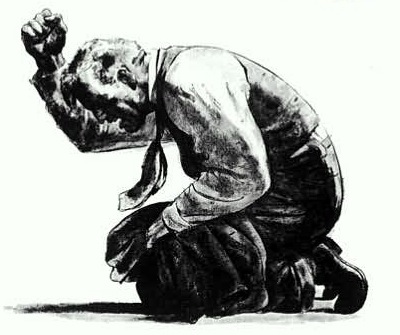Death of a Salesman- Arthur Miller
The play that I chose was Death of a Salesman written by Arthur Miller. It is a play that shows the complexities that Willy
Loman- the salesman- and his family face when trying to reach out the American
Dream, which is understood as the ideal of succeeding in life in an upward
social mobility through hard work. Most of the actions take place in Willy
Loman’s house and in some other places that he visits when travelling to work.
So let’s start by explaining what happens in
this powerful drama. I don’t want to spoil the “story”, but yes, he dies. He
kills himself. He was a 60 years old man whose exhaustion after work was always
apparent. But despite of that, he believed that you have to work “to be
someone”, you need to bring money home to pay the bills, and you need to be
good at business people to succeed. On page 25 he mentions “the man who makes an appearance in the business world, the man who
creates personal interest, is the man who gets ahead”. He spent the whole
life trying to be this kind of person, and indoctrinate this vision of life to
his sons, but he failed. He never made a lot of money; his name was never in
the paper... Was he happy with his life? Not apparently. He spent hours going
to work and miles driving home sometimes without having earned a cent. After
all he said “after all the highways and the trains, and the appointments, and the
years, you end up worth more dead than alive” (p.77). But he still thought
“There is so much I want to make for”.

This drama reflects the discontent of a family
and the constant need to possess something material, the constant need to put
money as a central element in life. At the same time, capitalism and
consumerism are concepts that remain along the whole drama and appear as
destructive to the human spirit, projecting a false image that money brings
happiness. Sadly, Willy never realized about what really should matter: his
family, a patient and affectionate wife
and sons who admired him. Instead of that, he pursued an empty life trying to
be someone that the society and the new system imposed as a successful man.
In the end of the play, Linda- who is Willy’s wife-
says “Willy, I made the last payment on
the house today. Today, dear, and there will be nobody home. We’re free and
clear”, but unhappily he had already died. Maybe Willy just had the wrong
dream. He was unable to accept the disparity between the Dream and his own
life.
Now that we have a general idea of what this
play is about, let’s focus
on the analysis of it. To
explore relationships between this play and one poem of the Beat Generation, I
decided to focus on Howl by Allen Ginsberg, which stands
as the celebration of counter culture movement. As appears in Cambridge
Dictionary, counter-culture is “a way
of life and a set of ideas that are completely different
from those accepted by most of society, or the group of people who live this way”. Another definition from
Dictionaries.com says that it is “The culture and lifestyle of those people, especially among the young,who reject or oppose the dominant values and behavior of society.”
This poem is a kind of tour of the other side of America, that side that is not
explicitly shown or mentioned. There are drugs-addicts, prostitutes. There is a
visceral rage against the system that requires conformity and selling-out
(Rahn, nd). The poem is not just a poem; it is a new vision of America, an
expression of indictment against the American culture. In terms of structure, the poem is in elegiac tone (from elegy that is a sad poem or song, especially remembering someone who has died or something in the past. Cambridge Dictionary); the tone of mourning.
One similarity
between this poem and the play Death of a Salesman is the theme Capitalism, which comes to cause conflict and separation. In Ginsberg’s poem, Moloc (a Babylonian God) could represent money as the element that causes this conflict:
What sphinx of cement and aluminun bashed open
their
skulls and ate up their brains
and imagination?
Moloch!
Solitude! Filth! Ashcans and unobtainable dollars!
(…)
Moloch whose mind is pure machinery! Moloch
whose blood is running money!
Another
relationship between the play and the poem is the use of the technique Stream
of consciousness. In Death of a Salesman this technique can be seen when William’s
memories, thoughts and feelings exist outside the primary consciousness, when
he moves from the present to past without any barrier of time and space, which make us know about his chaotic state of his mind. In Howl the whole poem
could be considered a stream of consciousness, thoughts written with an
energetic rhythm, designed even to let you breathe.
To finish off, I’d
like to mention one difference which is kind obvious: while literature of the
Beat Generation is more bold, straightforward and expressive- and in particular
this poem of Allen Ginsberg, the play of Arthur Miller expose an American
problem from a less explicit point of view.
If you haven’t read
the play Death of a Salesman I strongly recommend you to do it. Even though it is a play
of just 112 pages, it is full of emotions that grip you from the beginning until
the end.
Rahn, J. nd. The literature Network: The beat
Generation. Retrieved from http://www.online-literature.com/periods/beat.php

No hay comentarios:
Publicar un comentario